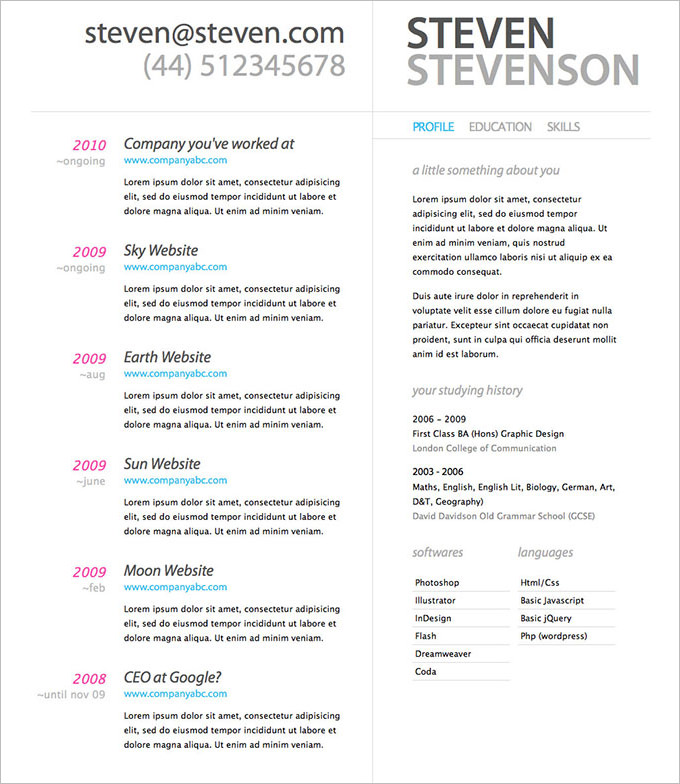

It’s ideal for a CV ( curriculum vitae) which needs a lot of technical detail, like IT or engineering, because it will allow you to get more text on the page without it looking bunched up. If you’re having trouble deciding on a font for your CV, Arial is definitely a safe bet.īest for: All industries and career levelsĬalibri is a nice light font, which is still clear and firm enough to provide a pleasant reading experience. It’s a simple no-frills font, which is easy to read and keeps your document looking clear and crisp. Here are our top 15 fonts that we recommend using on your CV, along with who they might work for, and examples of how they look on a CV.Īrial is probably the most popular choice for CVs and it’s easy to understand why. For example, if you are in banking or law then you may opt for a very traditional font – whereas a trendy tech or media CV might require something a little more exciting. Your industry could affect the choice you make too. The wrong choice of font could make your CV look sloppy, and give readers a headache.



Make your resume easy to read with these general guidelines.A good choice of font for your CV will ensure that it looks professional, and recruiters can read it with ease. Just remember to always stay consistent with the font size – for instance, only use one font size for your body text and only use another font size for section headings. As a rule of thumb, you can use different font sizes to make information and headings stand out. On the other hand, a small font size might make it hard to read and put off the recruiter. If you choose a size too big, your resume may be longer than one page. The size of the font is another crucial aspect to consider. Choose the right font size for your resume Later in this article, we will further detail this topic. You can determine the legibility of your resume font yourself rather easily. It is crucial to avoid the unprofessional and childish-looking fonts mentioned below. To ensure the best possible legibility, aim for any sans-serif, professional fonts. While this may seem obvious, many job seekers still get this wrong. Readability is the most crucial factor to consider when choosing the best fonts. So, keep these essential factors in mind when deciding on the best fonts for your resume. If the recruiter has to struggle to read a small font or is put off by a funky design, your resume will most likely get tossed. Thus, the font and font size can literally make or break your chances. It only takes the recruiters six seconds to decide if your resume is worth further inspection. How to choose the best fonts for a resume?


 0 kommentar(er)
0 kommentar(er)
